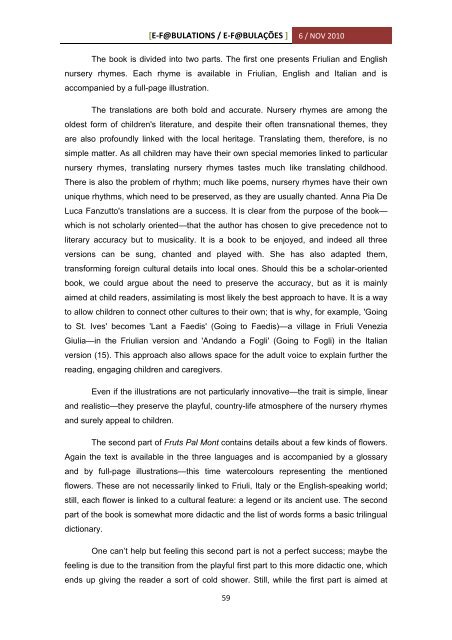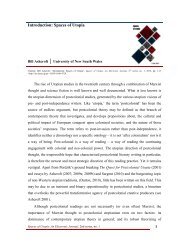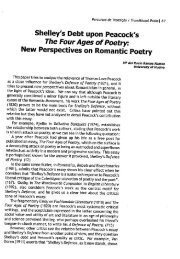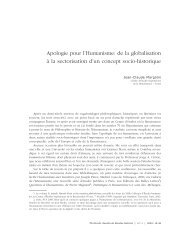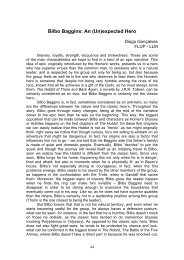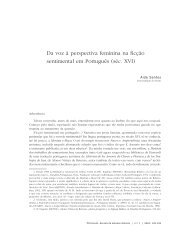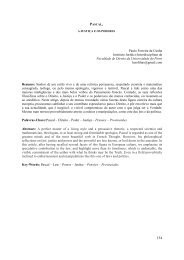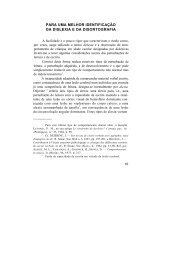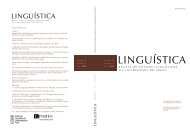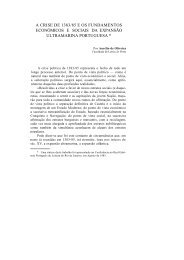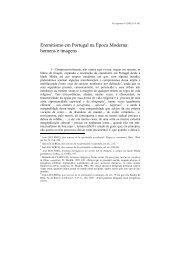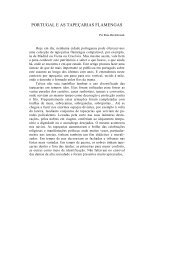e-journal of children's literature - Biblioteca Digital - Universidade do ...
e-journal of children's literature - Biblioteca Digital - Universidade do ...
e-journal of children's literature - Biblioteca Digital - Universidade do ...
Create successful ePaper yourself
Turn your PDF publications into a flip-book with our unique Google optimized e-Paper software.
[E‐F@BULATIONS / E‐F@BULAÇÕES ] 6 / NOV 2010<br />
The book is divided into two parts. The first one presents Friulian and English<br />
nursery rhymes. Each rhyme is available in Friulian, English and Italian and is<br />
accompanied by a full-page illustration.<br />
The translations are both bold and accurate. Nursery rhymes are among the<br />
oldest form <strong>of</strong> <strong>children's</strong> <strong>literature</strong>, and despite their <strong>of</strong>ten transnational themes, they<br />
are also pr<strong>of</strong>oundly linked with the local heritage. Translating them, therefore, is no<br />
simple matter. As all children may have their own special memories linked to particular<br />
nursery rhymes, translating nursery rhymes tastes much like translating childhood.<br />
There is also the problem <strong>of</strong> rhythm; much like poems, nursery rhymes have their own<br />
unique rhythms, which need to be preserved, as they are usually chanted. Anna Pia De<br />
Luca Fanzutto's translations are a success. It is clear from the purpose <strong>of</strong> the book—<br />
which is not scholarly oriented—that the author has chosen to give precedence not to<br />
literary accuracy but to musicality. It is a book to be enjoyed, and indeed all three<br />
versions can be sung, chanted and played with. She has also adapted them,<br />
transforming foreign cultural details into local ones. Should this be a scholar-oriented<br />
book, we could argue about the need to preserve the accuracy, but as it is mainly<br />
aimed at child readers, assimilating is most likely the best approach to have. It is a way<br />
to allow children to connect other cultures to their own; that is why, for example, 'Going<br />
to St. Ives' becomes 'Lant a Faedis' (Going to Faedis)—a village in Friuli Venezia<br />
Giulia—in the Friulian version and 'Andan<strong>do</strong> a Fogli' (Going to Fogli) in the Italian<br />
version (15). This approach also allows space for the adult voice to explain further the<br />
reading, engaging children and caregivers.<br />
Even if the illustrations are not particularly innovative—the trait is simple, linear<br />
and realistic—they preserve the playful, country-life atmosphere <strong>of</strong> the nursery rhymes<br />
and surely appeal to children.<br />
The second part <strong>of</strong> Fruts Pal Mont contains details about a few kinds <strong>of</strong> flowers.<br />
Again the text is available in the three languages and is accompanied by a glossary<br />
and by full-page illustrations—this time watercolours representing the mentioned<br />
flowers. These are not necessarily linked to Friuli, Italy or the English-speaking world;<br />
still, each flower is linked to a cultural feature: a legend or its ancient use. The second<br />
part <strong>of</strong> the book is somewhat more didactic and the list <strong>of</strong> words forms a basic trilingual<br />
dictionary.<br />
One can’t help but feeling this second part is not a perfect success; maybe the<br />
feeling is due to the transition from the playful first part to this more didactic one, which<br />
ends up giving the reader a sort <strong>of</strong> cold shower. Still, while the first part is aimed at<br />
59


